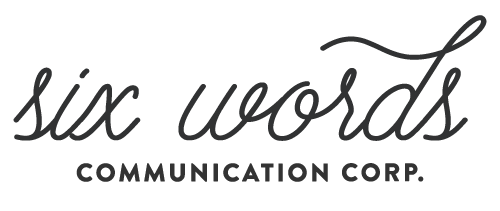Back to Basics – A Communication Checklist
If we’ve met, whether professionally or personally, you likely know I am addicted to lists.
On last count I had 37 unique lists in Notes on my computer and 22 on my iPhone. Topics range from “Weekly Checklist” (a standard list of things I need to get done) to “Bookshelf” (a list of books I want to read) to “Think Abouts” (a collection of thoughts I’m currently chewing on).
For me, lists ensure I get things done in an organized and focused way. They help me capture the ideas I want to think about or the things I need and want to do.
When it comes to communication, I often encourage my clients to think about their “Communication Checklist” or framework. These are the things everyone should think about before communicating. Whether it be drafting a blog, crafting a delicately worded email or working on a new campaign, a checklist can help you stay focused and ensure your communication is clear and effective.
Last week I did a workshop with the Information Technology team at SilverBirch Hotels & Resorts. The goal was to give them tools and insights to help them communicate more effectively with their colleagues. As highly technical people, they face the challenge of sharing technical information with their non-technical peers. Enter the communication checklist, a tool that can help tackle all sorts of communication barriers by encouraging you to be more thoughtful about how you communicate.
If you’re not sure how to start a “Communication Checklist” here are some items you should consider adding to yours:
- The Goal: Why do you need to communicate? Before you frantically send that email, hit publish on your next blog post, or sit down for an important one-on-one conversation, pause for a moment. Ask yourself (and others, if appropriate) what you’re trying to accomplish and what you hope to get out of your communication. Your answer should guide who, what and how you communicate.
- The Audience: Who are you speaking to. Knowing who is on the receiving end of your communication, and what their communication preferences are, will help define how you communicate with them (think language, tone, and medium). Be sure to tailor your communication to your audience.
- The Message: What do you need your audience to hear or understand? This one can be tricky, but it’s crucial. Try to stay focused on two or three key messages. One of my favourite prompts to help get at the heart of any communication is this statement: “If nothing else, I need my audience to hear THIS”. By identifying what “this” is, you’re more likely to stay focused and deliver a clear message.
- The Medium: What is the best way to get your message across? Once you’ve defined your goal, audience and message, think about the channel(s) you’re going to use. What medium is most likely to support your communication goal and reach your audience? Is your message delicate or complicated? Your answers to these questions should alter how you communicate.
- The Next Steps: What do you want your audience to do? If you need your audience to do something, be sure to articulate next steps and a clear call to action. Maybe it’s as simple as letting your audience know when they can expect an update in X number of days. Maybe they need to complete a task. Make it simple. Make it clear.
- The Feedback: How are you creating room for conversation? Sure, it’s a cliche, but communication is a two (or three, or four) way street. Whether you’re communicating to your staff, your customers or your service providers, it’s important to create space for conversation. You want your audience to know they can talk to you. How else will you gather feedback and ensure your communication goals are being met?
We can all benefit from taking the time to pause and think strategically about what we’re going to say before we say it – a “Communication Checklist” can help you do just that.
Now, back to my “Wednesday To Dos”.
Not sure how to tackle your latest communications challenge? Our team at Six Words Communication Co. is here to help. Learn more here or contact us at hello@sixwordscommunication.com.

